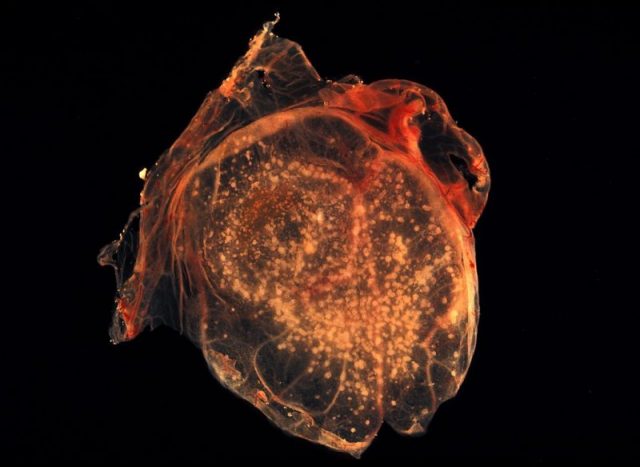It’s a sight that can’t help but break your heart. Wrapped in layers of tattered burial shroud, the 500-year-old child mummy entombed in the Basilica of Saint Domenico Maggiore in Naples wears a permanent expression of pain and distress.
The two year old was buried sometime during the 16th century and the cause of death was long thought to have been smallpox, due to the speckling of holes across the parched husk of the child’s face.
“There’s this hollowness yet this ghostlike pain still there which is fascinating from a scientific perspective but horrific from a parental perspective,” Hendrik Poinar, an evolutionary geneticist at McMaster University in Ontario, told the New York Times.

The smallpox diagnosis was seemingly confirmed by a study in the 1980s, but according to The New York Times, the real Renaissance killer was a virus first discovered in 1967.
A team of scientists tested the child’s remains looking to conclusively prove that smallpox had been active 500 years ago, but instead they identified the presence of hepatitis B, an infectious disease which affects the liver.
Young children are especially vulnerable to hepatitis B, which is transmitted from exposure to infected blood and bodily fluids. A vaccine has been available since 1982 but in the 16th century there would have been little means of treating our young casualty.

The illness typically begins with generalised poor health — loss of appetite, nausea, vomiting, aches, fever and dark urine — and then results in jaundice, making the skin yellow and itchy. In infants the virus causes a facial rash called Gianotti-Crosti syndrome, which is what they now believe caused the horrific pockmarks on the mummy’s face.
Today more than 250 million people around the world suffer the effects of hepatitis B. It killed nearly 900,000 people in 2015, mostly through liver disease, according to the World Health Organization.

“This very common and nasty bug has been with us at least 500 years, and I suspect it may have been here many, many thousands of years,” Edward Holmes, an evolutionary biologist from the University of Sydney, told the New York Times.
The child’s coffin can be found near dozens of others, some of which hold the remains of the 10 Princes of Aragon, as well as the aristocracy of Naples from the 15th and 16th centuries. Their cadavers are clad in decorated woven fabrics and precious silks as befits their status. Most of them were embalmed by doctors, but some have been naturally mummified by the conditions inside the Basilica of Saint Domenico Maggiore.

Although Naples is naturally warm and dry, the conditions in the crypt are ideal by design: the coffins were kept five metres above the ground and close to windows, while in the crypt were discovered two chambers which are believed to be for the dehydrating of corpses.
The floor was covered with a thick bed of sand to soak up the fluids oozing from the dead, and above them ventilation shafts allowed the air to circulate and prevented moisture from gathering which would have hastened the decay.
Their excellent states of preservation have made the cadavers popular subjects of scientific investigation over the last few decades, allowing researchers to take samples from the dead and compare them to modern samples.

This has been done using King Ferrante II, who died of malaria, King Ferrante I, who had a tumour, and the Marquis of Pescara, who died of pulmonary tuberculosis.
Read another story from us: The Egyptian Mummy Wrapped in a Manuscript from Ancient Italy
The most recent research team looking to replicate that success got more than they bargained for when they tested the child mummy for smallpox.
“That was the hope, that this would be a slam dunk,” joked Dr. Poinar. “But it’s never a slam dunk when you think it’s a slam dunk.”
